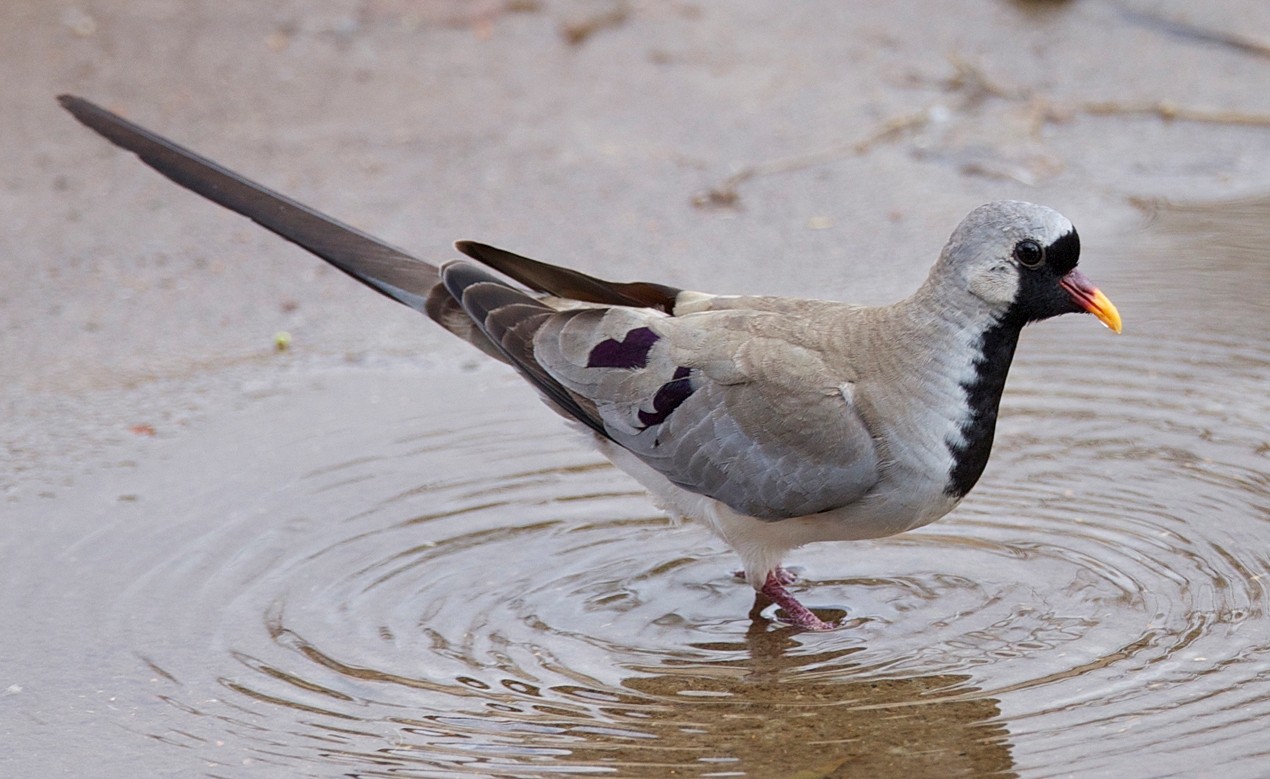Namaqua Dove
A species of Namaqua dove Scientific name : Oena capensis Genus : Namaqua dove
Namaqua Dove, A species of Namaqua dove
Botanical name: Oena capensis
Genus: Namaqua dove
Content
Description General Info
 Photo By Lip Kee , used under CC-BY-SA-2.0 /Cropped and compressed from original
Photo By Lip Kee , used under CC-BY-SA-2.0 /Cropped and compressed from original Description
The Namaqua dove is a tiny sparrow-sized pigeon, typically 22 cm in length with a 28–33 cm wingspan, and weighing 40g. It has a very long black tapered tail, and the size and shape have led to comparison with the budgerigar. The plumage is mostly grey apart from a white belly, and chestnut primary feathers which are visible in flight. The adult male has a yellow and red beak and a black face, throat and breast. The adult female lacks the black and has a red-based grey bill. Young birds are dark blotched on the wings and shoulders, and otherwise resemble the females. The song is a quiet, short, double hoo, higher on the longer second note kuh-whooo, mournful and frequently repeated. 
Size
28 cm
Nest Placement
Ground
Habitat
Namaqua Dove occupies primarily semi-arid and arid habitats within subtropical and tropical lowlands, usually not exceeding 1600 meters in altitude. Its preferred environments include open savannas with sparse vegetation, grasslands with interspersed bushes, and dry dambo regions. The species has also adapted to live near human activity and can be found in farmlands and villages. Geographically, namaqua Dove's range covers Sub-Saharan Africa to parts of the Arabian Peninsula.
Dite type
Granivorous
General Info
Feeding Habits
Bird food type
Behavior
The dove is quite terrestrial, and usually forages on open ground and roadsides. The food is almost exclusively minute seeds, such as those of grasses, sedges and weeds. It is not gregarious, being encountered singly or in pairs, though they may form larger flocks at waterholes. The flight is fast with clipped beats and a tendency to stay low. It builds a stick nest in a bush, and lays two white eggs, which are incubated for 16 days in typical pigeon fashion; the female at night and early morning and the male from mid morning till late afternoon. 
Distribution Area
The dove is a widespread resident breeding bird in Sub-Saharan Africa and Madagascar with its range extending into the Arabian Peninsula southern Israel, Jordan and as far north as Turkey. It is found in near desert with acacia and bushes. The namaqua dove is prone to wander out its original range, it is now being recorded south Asian countries. In Pakistan this species is recorded near shore waters off Paradise Point, Karachi on Friday, 14 October 2016. In India a female namaqua dove is recorded at khijadiya bird sanctuary near jamnagar,Gujarat on 17 December 2017 However, the bird is thought to be in trade in India, and a cage escapee can not be denied for its record from Western India. 
Species Status
Not globally threatened.
Scientific Classification
Phylum
Chordates Class
Birds Order
Pigeons and doves Family
Dove Genus
Namaqua dove Species
Namaqua Dove